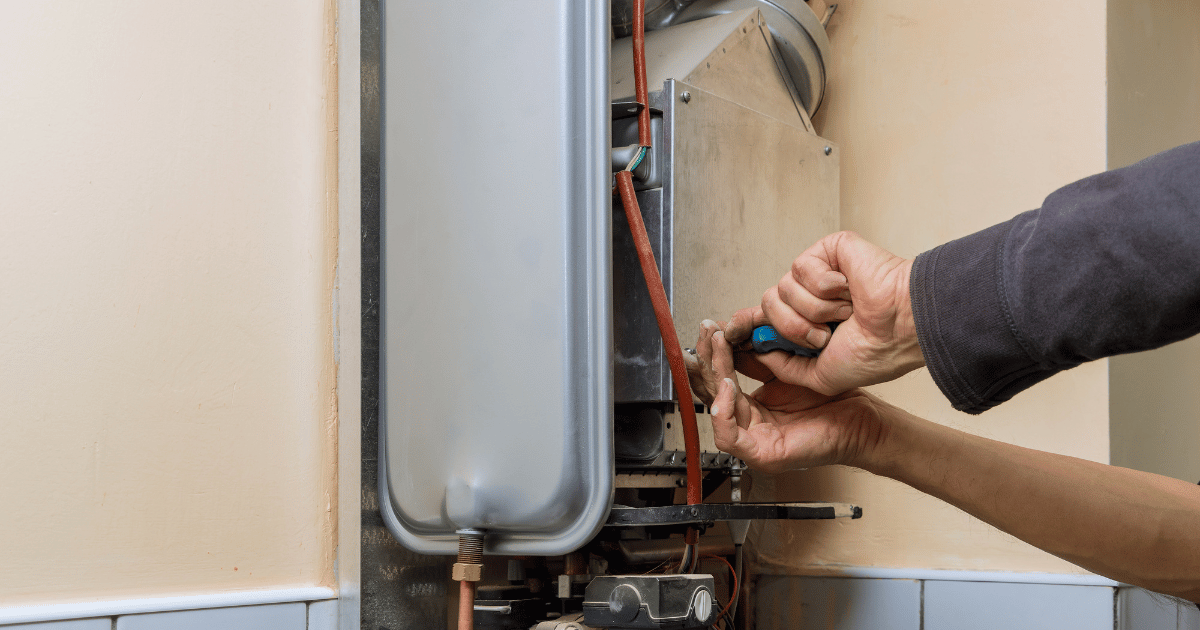What to Maintain Your Home's Hot Water System ProperlyHow to Prolong the Lifespan of Your Home's Hot Water System By Maintenance
What to Maintain Your Home's Hot Water System ProperlyHow to Prolong the Lifespan of Your Home's Hot Water System By Maintenance
Blog Article
Are you currently interested in suggestions involving What Kind of Maintenance Do Water Heaters Need??

Hot water is necessary for day-to-day comfort, whether it's for a rejuvenating shower or cleaning meals. To guarantee your hot water system runs effectively and lasts much longer, regular maintenance is vital. This short article offers useful pointers and understandings on how to maintain your home's hot water system to prevent disturbances and costly repair services.
Intro
Maintaining your home's warm water system may appear difficult, yet with a few straightforward steps, you can ensure it runs smoothly for several years to come. This overview covers everything from comprehending your warm water system to DIY upkeep tips and understanding when to call expert aid.
Importance of Preserving Your Warm Water System
Regular upkeep not just extends the lifespan of your hot water system however additionally guarantees it runs efficiently. Neglecting maintenance can result in reduced performance, greater power costs, and also premature failure of the system.
Signs Your Hot Water System Needs Maintenance
Understanding when your hot water system needs attention can avoid major problems. Watch out for indications such as inconsistent water temperature, unusual noises from the heating unit, or corroded water.
Understanding Your Hot Water System
Before diving into maintenance tasks, it's valuable to comprehend the fundamental elements of your warm water system. Typically, this includes the water heater itself, pipes, anode poles, and temperature controls.
Monthly Maintenance Tasks
Regular regular monthly checks can assist capture small concerns prior to they intensify.
Flushing the Water Heater
Flushing your water heater gets rid of debris build-up, enhancing effectiveness and extending its life.
Checking and Changing Anode Rods
Anode poles stop corrosion inside the container. Evaluating and changing them when worn is essential.
Inspecting and Adjusting Temperature Level Setups
Changing the temperature setups makes certain ideal performance and security.
Do It Yourself Tips for Maintenance
You can carry out a number of maintenance tasks yourself to maintain your warm water system in leading problem.
Looking for Leaks
Frequently examine pipes and connections for leakages, as these can bring about water damages and greater expenses.
Evaluating Stress Alleviation Valves
Checking the pressure safety valve guarantees it works properly and protects against too much stress accumulation.
Insulating Pipelines
Protecting hot water pipelines minimizes warm loss and can save power.
When to Call a Specialist
While DIY maintenance is beneficial, some concerns need expert proficiency.
Facility Problems Requiring Specialist Assistance
Examples include significant leaks, electrical troubles, or if your water heater is consistently underperforming.
Regular Expert Maintenance Conveniences
Expert maintenance can consist of complete evaluations, tune-ups, and ensuring conformity with safety criteria.
Final thought
Regular upkeep of your home's hot water system is essential for performance, longevity, and price savings. By following these ideas and knowing when to seek specialist assistance, you can guarantee a reliable supply of warm water without unexpected interruptions.
Water Heater Maintenance Tips
Test the TPR Valve
Shut off the power and the cold-water supply valve. Place a bucket under the pipe connected to the temperature-pressure-release (TPR) valve on the top or side of the tank. (This valve opens if the tank pressure gets too high.) Lift the valve’s tab to let some water out, then let go. If water keeps flowing, drain the tank partway, unscrew the old valve with a pipe wrench, and install a new one. Check the Anode Rod
Put a hose to the tank’s drain cock and let out a few gallons of water. Now fit a 1 1/16-inch socket onto the rod’s hex head on top of the heater (or under its top plate) and unscrew the rod. If it’s less than ½ inch thick or coated with calcium, buy a new one, wrap its threads with Teflon tape, put it back in the tank, and tighten securely. Use this segmented rod if headroom above the tank is limited. Drain the Tank and Wash Out Sediment
Drain the remaining water in the tank into the bucket, then stir up the sediment on the tank’s bottom by briefly opening the cold-water supply valve. Drain and repeat until clean water comes out of the hose. Close the drain cock, refill the tank, and turn its power back on. Adjust the Temperature
Find the temperature dial on the side of the tank and unscrew its cover. Adjust the dial to 120 degrees using a flathead screwdriver. For every 10 degrees the temperature is lowered, you can expect to save up to 5 percent in energy costs. Turn the water heater off or the thermostat down to its lowest setting if you plan to be away from home for more than three days. Insulate the Pipes
Buy some self-sticking 3/8-inch-thick foam pipe insulation that matches the pipes’ diameter. Slide the foam over the hot-and cold-water pipes as far as you can reach. Insulating the cold-water pipe prevents condensation in summer. Peel the tape and squeeze the insulation closed. If the pipe is 6 inches or less from the flue, cover it with 1-inch-thick unfaced fiberglass pipe wrap. https://www.thisoldhouse.com/plumbing/21016402/how-to-maintain-a-water-heater

Do you appreciate reading about Tips on Maintaining a Water Heater? Place a remark further down. We will be glad to hear your insights about this content. We are looking forward that you visit us again before long. Enjoyed our blog posting? Please quickly share it. Let others locate it. I thank you for reading our article about Tips on Maintaining a Water Heater.
Call Today Report this page